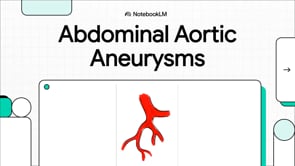מומחה מוביל בטרשת נפוצה, ד"ר הווארד ווינר, MD, מסביר כיצד אפשרויות הטיפול התרחבו משמעותית. הוא מפרט את מפת הדרכים לטיפול בטרשת נפוצה, תוך הדגשת ההבדל הקריטי בין השלב הפעיל-הפוגתי לשלב הפרוגרסיבי. ד"ר הווארד ווינר, MD, קובע כי כל מטופל עם מחלה פעילה-הפוגתית צריך להתחיל טיפול באופן מיידי. הוא מדגיש כי כמעט כל המטופלים יחליפו תרופות במהלך מהלך מחלתם בשל פיתוח תרופות חדשות והצורך ביעילות מיטבית. ניטור באמצעות התקפים קליניים וסריקות MRI סדרתיות הוא חיוני כדי לוודא שהטיפול פועל.
ניווט בין אפשרויות הטיפול בטרשת נפוצה ושינויים בתרופות
קפיצה לפרק
- נוף הטיפולים בטרשת נפוצה ושלבים
- יוזמת טיפול בטרשת נפוצה
- ניטור יעילות הטיפול
- סיבות להחלפת תרופה
- סוגי תרופות לטרשת נפוצה
- תמליל מלא
נוף הטיפולים בטרשת נפוצה ושלבים
ד"ר הווארד ווינר, MD, מתאר את נוף הטיפולים הנוכחי בטרשת נפוצה, הכולל כעת מעל עשר תרופות משנות מהלך מחלה. הוא מבהיר את שני שלבי המחלה השונים המנחים החלטות טיפול. לשלב הטרשת הנפוצה ההפיכתית-נסוגה קיימות אפשרויות טיפול רבות. לעומת זאת, לשלב הטרשת הנפוצה הפרוגרסיבית יש פחות טיפולים יעילים, המייצגים תחום משמעותי של צורך לא מסופק.
יוזמת טיפול בטרשת נפוצה
ד"ר הווארד ווינר, MD, מספק הנחיה ברורה לחולים שאובחנו לאחרונה עם טרשת נפוצה הפיכתית-נסוגה. הוא קובע שכל חולה עם מחלה פעילה הפיכתית צריך להתחיל טיפול משנה מהלך מחלה ללא דיחוי. הבחירה הראשונית בתרופה ספציפית פחות קריטית מהמעשה של התחלת הטיפול עצמו. ד"ר הווארד ווינר, MD, מסביר לד"ר אנטון טיטוב, MD, שתהליך הבחירה הוא אישי ותלוי בדיון בין החולה הבודד לרופאו.
ניטור יעילות הטיפול
ד"ר הווארד ווינר, MD, מדגיש שהתחלת טיפול היא רק הצעד הראשון. ניטור מתמשך הוא חיוני כדי לאשר שתרופה שולטת במחלה ביעילות. יעילות נמדדת על ידי מעקב אחר התקפי טרשת נפוצה קליניים ועל ידי שימוש בסריקות MRI סדרתיות. פרוטוקול ניטור טיפוסי עשוי לכלול MRI כל שישה חודשים בשנה או השנתיים הראשונות לאחר התחלת תרופה חדשה. לאחר תקופה זו, סריקות נעשות לעתים קרובות每年 או כאשר מופיעים תסמינים נוירולוגיים חדשים.
סיבות להחלפת תרופה
ד"ר הווארד ווינר, MD, חושף תובנה מפתח מהפרקטיקה הקלינית הרחבה שלו. הוא אומר לד"ר אנטון טיטוב, MD, שכמעט כל חולי הטרשת הנפוצה יחליפו תרופות בשלב כלשהו. שיעור שינוי גבוה זה מונע על ידי שני גורמים עיקריים. ראשית, כ-25% מהחולים לא מגיבים היטב לטיפול הראשוני שלהם, מה שמחייב החלפה ליעילות טובה יותר או בשל תופעות לוואי. שנית, ההתפתחות המהירה של טיפול בטרשת נפוצה意味着 תרופות חדשות, לרוב עדיפות, הופכות זמינות continuously.
סוגי תרופות לטרשת נפוצה
מגוון התרופות לטרשת נפוצה הזמינות כיום נחלק לשלוש קטגוריות רחבות based on their administration. ד"ר הווארד ווינר, MD, מתאר תרופות הניתנות בהזרקה, תרופות oral, ותרופות הניתנות בעירוי. תרופות חדשות יותר often offer פרופילי סיכון-תועלת משופרים, יעילות greater, ושיטות מתן easier בהשוואה לטיפולים older. This expanding family of options allows for רפואה more personalized and precise בטיפול בטרשת נפוצה.
תמליל מלא
ד"ר אנטון טיטוב, MD: אפשרויות הטיפול בטרשת נפוצה התרחבו בשנים האחרונות. There are over ten, or probably more, disease-modifying medications against multiple sclerosis. Most of our viewers are outside of the United States. Not all multiple sclerosis medications are available, but nevertheless, it is an increasing family of potential options for multiple sclerosis treatment.
Could you please discuss a roadmap of multiple sclerosis therapy? How to choose the best treatment for a given patient with multiple sclerosis?
ד"ר הווארד ווינר, MD: This is a big question. There are two stages of multiple sclerosis. There is a relapsing-remitting multiple sclerosis stage, and then there is the progressive multiple sclerosis stage.
We have many treatments for the relapsing-remitting multiple sclerosis stage. We have few treatments for the progressive multiple sclerosis stage.
Every patient who is diagnosed with multiple sclerosis and has relapsing disease should be treated. The question is, which medication should they take?
ד"ר אנטון טיטוב, MD:
ד"ר הווארד ווינר, MD: I can't say that they should take medication A or B. The most important thing is for every patient to start multiple sclerosis therapy.
What is important is, after they go on therapy, they need to be monitored to make sure the therapy is working. If treatment is working, it is fine.
Efficacy of treatment is determined by measuring multiple sclerosis relapses and MRI scans. Sometimes patients have side effects or they are still having multiple sclerosis symptoms. Then they should be changed to another medication.
There are injectable multiple sclerosis medications, there are oral multiple sclerosis medications, and there are medications given by infusion. It depends on the patient and the doctor.
The multiple sclerosis activity monitoring is done also by serial MRI scans. Sometimes we start somebody on a multiple sclerosis medication. Then we start with an MRI every six months for a year or two, and then every year or if they have new symptoms.
ד"ר אנטון טיטוב, MD: You have a vast multiple sclerosis practice. How often do you have to switch patients from one medication to another based on those monitoring results?
ד"ר הווארד ווינר, MD: It is hard to say because the multiple sclerosis medications keep changing. But I would say virtually all of our multiple sclerosis patients have switched from one medication to another. That is because new multiple sclerosis medications keep coming out.
ד"ר אנטון טיטוב, MD: I see, and those new multiple sclerosis medications presumably have a better risk-to-benefit ratio?
ד"ר הווארד ווינר, MD: New medications may be more effective, they may be easier to take. Maybe 25% of our patients don't do well on one medication. We have to switch to another multiple sclerosis medication.
Treatment of multiple sclerosis rapidly evolves. New medications appear. Precision medicine diagnostic tests match patients with the most effective medications.






